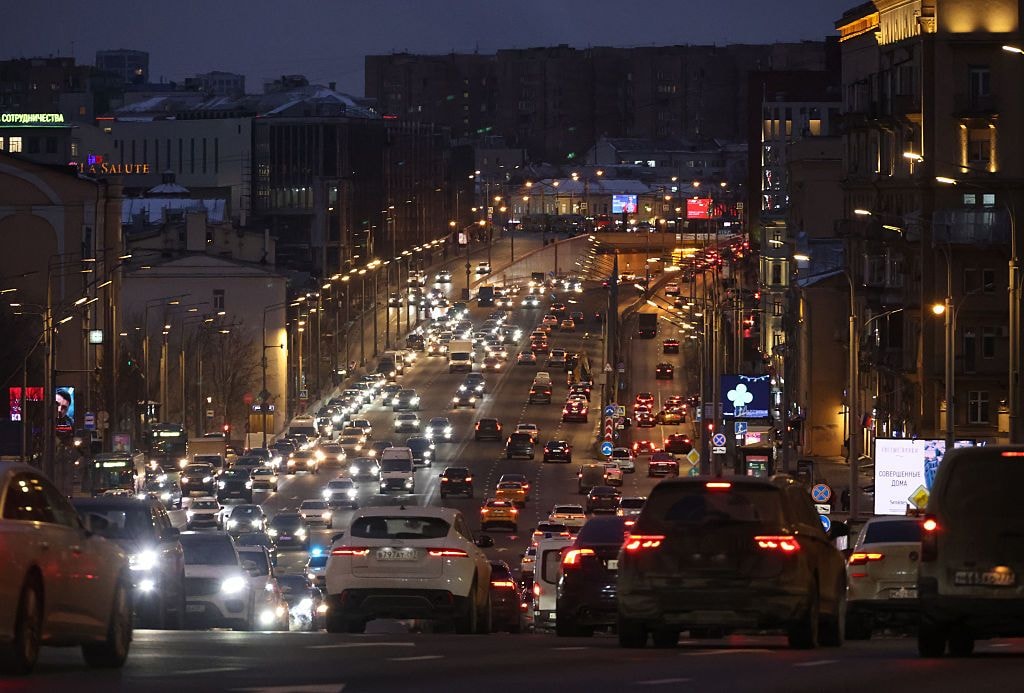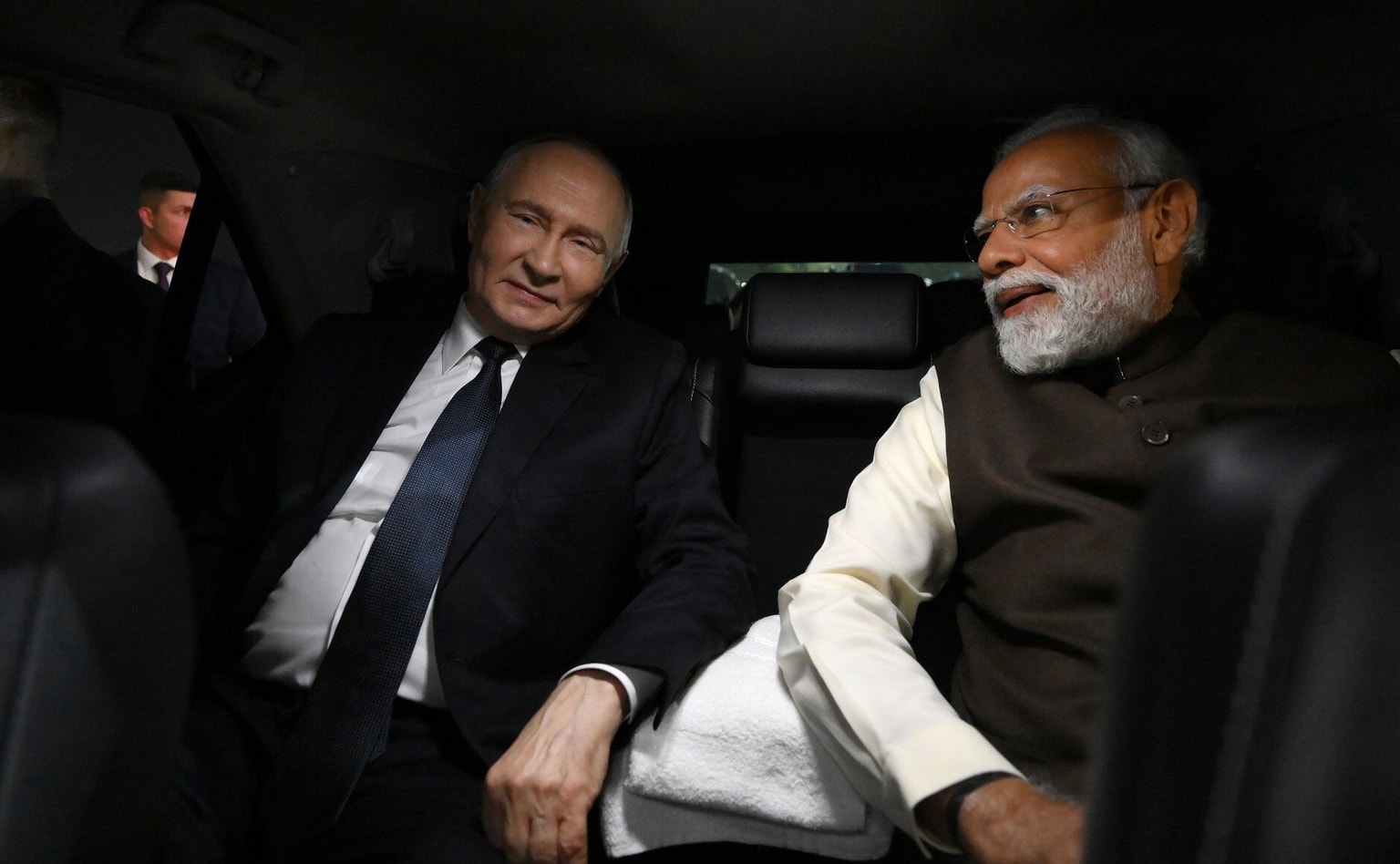Ukraine war latest: Reports of explosions, fires in Russian rear, occupied Sevastopol after alleged Ukrainian strikes

Key developments on Jan. 21:
- Multiple explosions, fires reported overnight in Russian rear due to alleged long-range Ukrainian strikes
- Explosions reported in occupied Sevastopol
- Air Force: Russian air defense sufficient on front lines, in Crimea but not on Russian soil
- Budanov: North Korea currently Russia's largest arms supplier
- Military: Russia's capture of Kharkiv Oblast village a 'temporary phenomenon'
- Russian attacks on Donetsk, Zaporizhzhia oblasts kill one, injure two over past day
Explosions and large fires were reported in several Russian cities overnight on Jan. 21, in a possible coordinated effort by Ukraine to strike key targets deep inside Russian territory.
The terminal of Russia's Novatek natural gas company caught fire in the port of Ust-Luga in Leningrad Oblast near St. Petersburg, Governor Alexander Drozdenko reported on Telegram.
The terminal halted operations after an alleged Ukrainian drone attack caused a large fire at the fuel plant, Bloomberg reported on Jan. 21.
The explosions in Ust-Luga were a result of a planned operation by the Security Service of Ukraine, according to an unnamed source in the agency cited by Ukrainska Pravda.
Local authorities reported no casualties, but other Russian media sources suggested that 150 people had to be evacuated.
Novatek is the largest independent natural gas producer in Russia. The fire was still ongoing as of 9 a.m. local time on Jan. 21, according to Drozdenko.
Other attacks were reported overnight on Jan. 21 in Russia's Tula, Smolensk, and Oryol oblasts, targeting infrastructure critical to the Russian military.
The Russian Defense Ministry accused Ukraine of launching multiple drone attacks and claimed that one drone was shot down over Tula, four over Smolensk, and one over Oryol.
Citing its sources in Ukraine's special services, news outlet Suspilne reported that the Shcheglovskiy Val plant in Tula, where Pantsir mobile air defense systems for the Russian military are produced, was one of the targets.
The Smolensk Aviation Plant, which produces Kh-59 cruise missiles used to frequently target Ukraine, was hit in the overnight attack, Hromadske reported, citing its source in Ukraine's military intelligence agency (HUR). The plant was previously hit in October and November 2023.
Smolensk Oblast Governor Vasily Anokhin denied that there were casualties or property damage during the drone attack.
A source from HUR confirmed to Ukrainska Pravda that the agency was also behind the attacks in Oryol and Tula.
Since the start of Russia's full-scale invasion of Ukraine, multiple attacks have been reported across Russian territory. Ukraine does not always claim responsibility for these attacks.
An overnight drone attack that hit an oil depot near St. Petersburg was carried out by Ukraine's military intelligence agency (HUR), Ukrainska Pravda reported on Jan. 18, citing a source in intelligence.

Explosions reported in occupied Sevastopol
Local media and Russian occupation authorities reported several explosions in the port city of Sevastopol in occupied Crimea on Jan. 21.
Around three explosions were heard in the early afternoon, according to a local correspondent for Radio Free Europe/Radio Liberty's Crimean service.
Soon after, the head of the Russian-installed city authorities Mikhail Rozvozhaev reported that an airborne target had been shot down over the sea nearby.
Later in the day, the Russian Defense Ministry claimed that two Ukrainian missiles had been shot down over the western coast of Crimea.
As the full-scale war has developed, military facilities and infrastructure in Russian-occupied Crimea have become increasingly vulnerable to long-range Ukrainian drone and missile strikes.
Most spectacularly, separate Ukrainian strikes in September 2023, reportedly with British-made Storm Shadow missiles, destroyed a Russian landing ship, submarine, and the headquarters of the Russian Black Sea Fleet in Sevastopol.
Air Force: Russian air defense sufficient on front lines, in Crimea but not on Russian soil
Russia has a sufficient capacity for air defense on Ukraine's front lines and in occupied Crimea but not on Russian soil, Yurii Ihnat, a spokesperson for Ukraine's Air Force, said in an interview for Focus media outlet published on Jan. 20.
Ihnat's statement follows reports that Ukrainian drones attacked oil depots in Klintsy in Russia's Bryansk region and the Russian city of St. Petersburg on Jan. 18-19.
Klintsy lies around 80 kilometers from the border with Ukraine's Chernihiv Oblast, while Saint Petersburg is over 1,000 kilometers away.
"Russian air defense is thinning out. They filled the front line and Crimea with it (air defense). But you see that the Russian territory is not so filled with air defense equipment," Ihnat told Focus's journalist.
"Moscow, Saint Petersburg, (Russian leader Vladimir) Putin's bunkers will be more or less protected, but Ukrainian-made drones reach Moscow, St. Petersburg, and oil depots in other cities. This is a very good sign."
Reports of drone attacks against military targets on Russian soil have increased in recent months. Kyiv usually doesn't officially comment on such strikes.
When asked by Focus what weaponry can help change the course of the war, Ihnat said that Ukraine can't effectively fight with an army "that surpasses us in terms of numbers and technology."
"We need a tool from our partners to end the war. And this tool is high-tech long-range weapons," Ihnat explained, saying that in addition to U.S.-supplied ATACMS and Storm Shadow missiles delivered by the U.K., Ukraine needs Taurus missiles that Germany has so far refused to provide.
"We need to have (large) numbers to beat the enemy more effectively. Then it will be a serious help to our brothers from the Ground Forces," he added.
"We understand the conditions in which they are currently fighting at the front… Artillery is firing, aviation is firing, drones are flying overhead to destroy you. This is extremely hard work… Therefore, air support is critical, in particular, for long-range strikes to reduce the supply of enemy ammunition and logistics."
According to the Russian military design bureau "Stratim," as cited by Russian state-controlled media TASS on Jan. 18, Russia is developing a cheaper version of the Iranian-designed Shahed drone called the "Hawk."
Russian forces have extensively used Shahed-type kamikaze drones to attack Ukraine's cities and critical infrastructure.
At the same time, Ukraine plans to produce one million drones in 2024, President Volodymyr Zelensky said on Dec. 19 last year, recognizing the importance of this weaponry on Ukrainian battlefields.
Military: Russia's capture of Kharkiv Oblast village a 'temporary phenomenon'
Russia's capture of Krokhmalne, a village in Kharkiv Oblast, is a “temporary phenomenon,” the Ukrainian Ground Forces Command spokesperson Volodymyr Fityo said, as quoted by Hromadske on Jan. 21.
In its morning summary, Russia’s Defense wrote that the village had been taken over by Russian forces. Fityo noted that Ukrainian troops had been moved to prepared reserve positions to hold the defense and prevent Russia from advancing further.
"We simply don't report on the repulse of 100-200 meters, and for Russian propagandists, any victory must be presented to explain why they lost 7,055 soldiers at the front in the Khortytsia zone of responsibility in January alone," Fityo said during the live televised broadcast.
He added that the front lines shift daily and that the loss of the small village, which had a pre-war population of 45, is a “temporary phenomenon.”
Ukraine managed to repel 21 attacks near Synkivka, Petropavlivka, Kharkiv Oblast, and Stelmakhivka, Luhansk Oblast, the Armed Forces General Staff reported earlier in the day. 80 clashes took place on Jan. 20.
Budanov: North Korea currently Russia's largest arms supplier
North Korea is currently Russia's largest arms supplier, Ukrainian military intelligence (HUR) chief Kyrylo Budanov told the Financial Times in an interview published on Jan. 21.
North Korea has transferred "a significant amount" of artillery ammunition to Russia, according to Budanov.
"This allowed Russia to breathe a little,” Budanov said. “Without (North Korea's) help, the situation would have been catastrophic.”
Russia has been struggling to keep up with the production of its weapons and munitions at a rate that matches its usage on the front. As a result, they have been compelled to seek military assistance from countries such as North Korea.
"This has always been considered beneath them, it’s an indignity," Budanov said.
Moscow and Pyongyang have significantly increased their military ties since the beginning of the full-scale invasion of Ukraine in February 2022.
A spokesperson for Ukraine’s military intelligence previously said on Jan. 15. that North Korea has supplied Russia with around one million rounds of ammunition, mainly 122 mm and 152 mm artillery shells.
As reported both by Kyiv and Washington, Russia also used North Korean ballistic missiles against Ukraine for the first time in strikes against Kharkiv on Jan. 2.
North Korea's state news agency, KCNA, also reported on Jan. 21 that Russian dictator Vladimir Putin is planning to visit North Korea in the near future.
Russian attacks on Donetsk, Zaporizhzhia oblasts kill one, injure two in one day
Russian attacks killed one civilian and injured two over Jan. 20-21 in Donetsk and Zaporizhzhia oblasts, local authorities reported.
Russian forces attacked the city of Kurakhove with Grad rockets, killing one civilian and injuring another, Donetsk Oblast Governor Vadym Filashkin reported on Jan. 21.
Residential buildings were targeted in the attack, according to Filashkin. A 31-year-old man was killed at the site of the rocket impact.
A kindergarten and several houses were also damaged by the strikes, causing a fire to break out. While the fire has been extinguished, authorities are assessing its aftermath, the governor said.
Kurakhove is located around 12 kilometers west of the front line, running near the destroyed town of Mariinka, which Russian forces took the last streets of in December.
It was home to over 18,000 people prior to the full-scale invasion.
Filashkin urged all residents remaining in Donetsk Oblast to evacuate the region.
Russian forces struck Zaporizhzhia Oblast 95 times across 16 localities over a 24-hour period, regional governor Yurii Malashko reported on Jan. 21.
A 71-year-old resident was injured in Huliaipole due to artillery shelling. There were two reports of the destruction of residential buildings.
Russia continues to occupy a large portion of Zaporizhzhia Oblast, including all of its coastline. The region suffers frequent attacks.
Russia conducted seven multiple rocket launcher attacks on Mala Tokmachka and Robotyne, as well as 26 drone strikes on Huliaipole, Orikhiv, Zaliznychne, Luhivske, Novoandriivka, Robotyne, Levadne and Poltavka.
Sixty-two artillery shells hit Novodarivka, Novoandriivka, Mala Tokmachka, Charivne, Shcherbaky, Huliaipole, Lobkove, Kamianske, Piatykhatky and other settlements.
Southern Kherson Oblast suffered 76 shelling attacks on Jan. 20, according to Oleksandr Prokudin, head of the regional military administration.
On the same day, Russia shelled Sumy Oblast 37 times. In both cases, no civilian casualties were reported.










